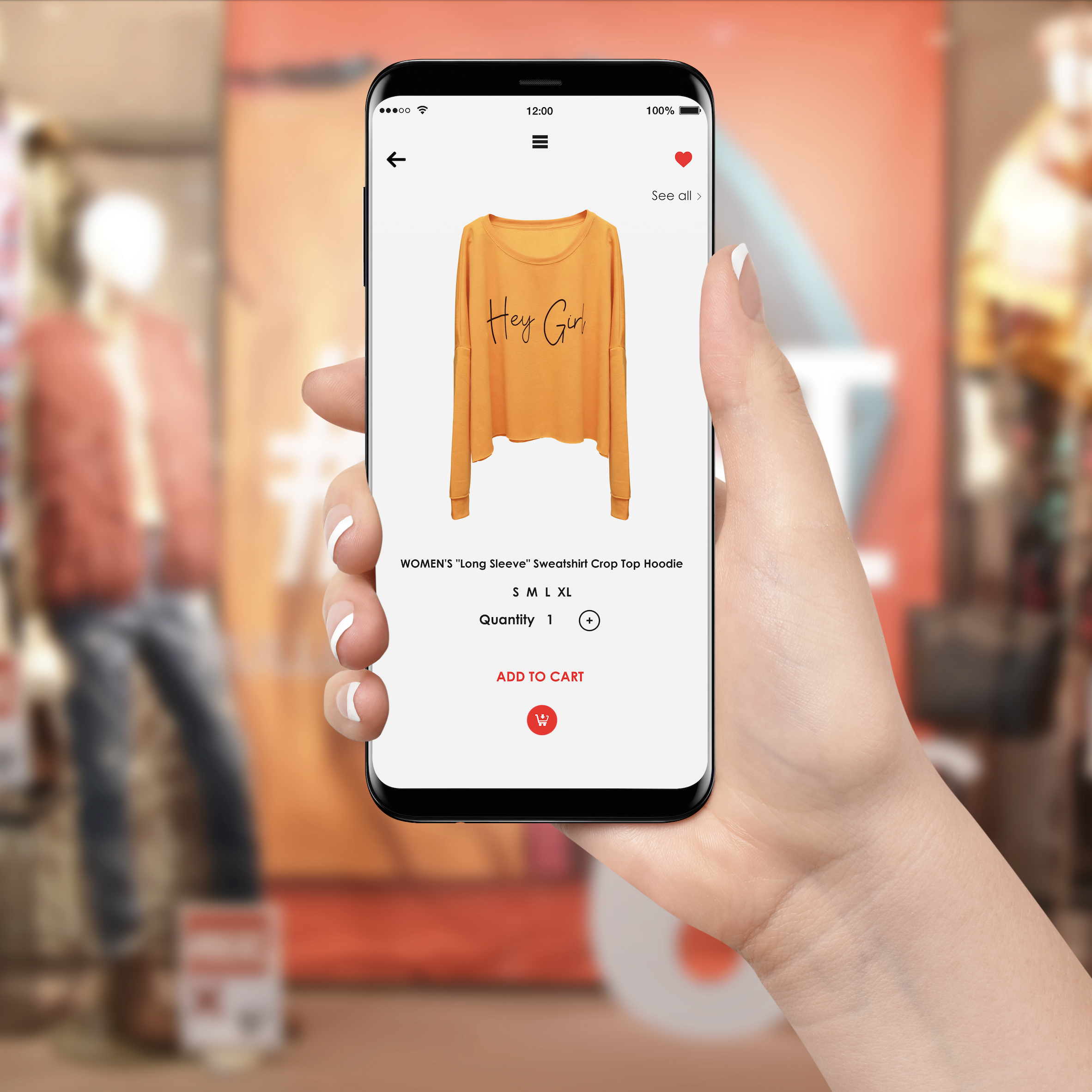With £136bn touted to come from sales through this route in the UK by 2024 — it’s a bit late, but nevertheless very important to ask — what exactly is mCommerce?
According to a standard definition on Investopedia, mCommerce, also known as Mobile Commerce or m-commerce, involves using wireless handheld devices such as cell phones and tablets to conduct commercial transactions online, including the purchase and sale of products, online banking, and paying bills.
So mCommerce includes…
What are the advantages of mCommerce?


Get more information about your customers
A big advantage of mobile commerce is the opportunity to connect to your customers through a new channel in a personalised way based on their preferences, location, previous searches, and purchase history. It also makes it easier to retarget or remarket to existing consumers to keep your brand visible through their mobile devices. On average, 62% of users will return to an app the following month if they are engaged with push notifications.


Improving customer experience
46% of retailers are spending more time on their custom mobile app in 2022. When mobile phones have become an extended part of the human body, being used for everything from setting alarms to counting steps, creating a mobile-friendly and tailored experience for mobile shopping is a great way to make their shopping experience comfortable right from browsing to checkout and payment.


Offer a variety of payment options
There are so many secure and diverse mobile payment options available to add to your ‘mobile wallet’, it has made one-click payments straightforward for customers. If customers feel comfortable enough to use it, the options are endless with Apple Pay, PayPal, Google Pay, Amazon Pay, etc. In fact, according to Marqeta’s research, 64% of consumers prefer to use their mobile phones to pay because it has more built-in security features.


What is the difference between mCommerce and eCommerce?
Now the big one. While things seem quite seamless between mobile and eCommerce, there are certain nuances that give mCommerce a bit of an edge.
- First, let’s look at what makes both these streams beneficial for businesses:
- They are available to use round the clock
- Purchases/transactions can be made from any location
- Lowers cost of physical store maintenance with reduced dependency
- They expand the target market for businesses
But here’s where the differences come into play:
| mCommerce | eCommerce | |
|---|---|---|
Mobility & Convenience | With mobile devices, users can conveniently carry out transactions ‘on the go’ as long as they have access to the internet. | Conducted with the help of desktop computers and laptops, which creates physical limitations. |
Reach | Globally, 68.1% website visits come from mobile devices and this continues to be on the rise, making the audience wider. | Computer internet usage has dropped to over recent years, with just 28.9% of website visits coming from desktops and 3.1% from tablets. |
Tracking | Can track and identify user locations with Wi-Fi, GPS, and other tracking tech. This means personalized recommendations, discounts, and suggestions for buyers. | eCommerce location tracking capabilities are quite limited due to the non-portability of devices. |
Security | Secure transaction options are more extensive on mobile with additional biometric authentication such as retina scan, Face ID, fingerprint, etc. | Credit cards continue to be the common form of payment, with security measures such as two-factor authentication and multi-level authentication. But buyers have rising concerns and hesitation over sharing their credit card numbers over the internet. |


The future of mCommerce
In 2020, 66.7% of UK shoppers switched to mCommerce, while 17% of online shoppers in the UK have been using their tablets for shopping. In the UK, the value of products purchased via mobile devices in 2020 was around £65 billion.
As mentioned at the start, mCommerce is predicted to surpass the £100 billion mark by 2024 just in the UK. And with mobile device users on the ever increase, this figure doesn’t seem too far from being actualised.
Keeping these numbers in mind, businesses must make a more conscious effort to ensure their website and purchase platforms are mobile-friendly or adapted for mobile devices. Alongside, it’s important to make products available on channels built for mobile, such as social media marketplaces, shopping apps, and other marketplace channels.












